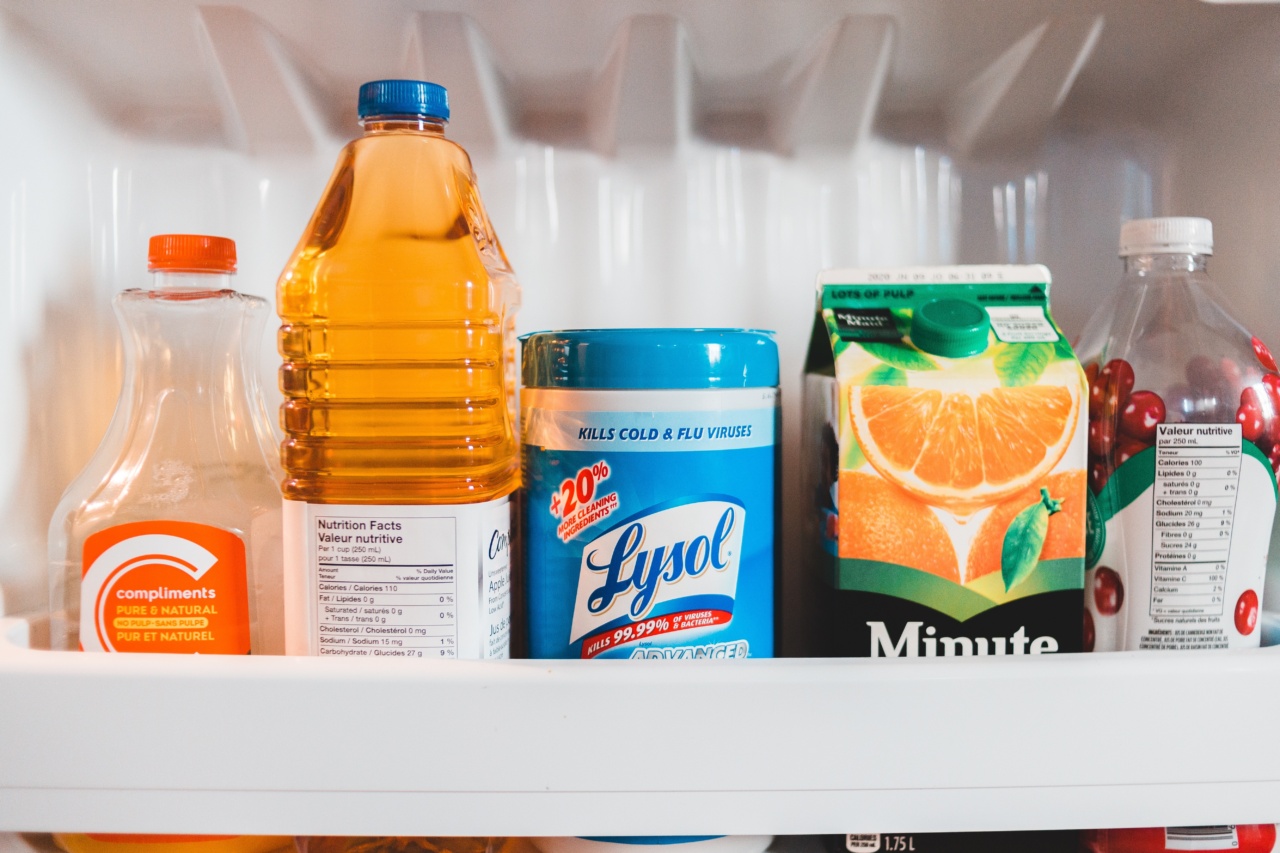Food storage is a crucial aspect of maintaining a healthy and sustainable lifestyle. Whether you are a busy individual or a homemaker, having a well-organized fridge can save you time, money, and reduce food waste.
Properly storing your perishable items in the refrigerator can help maintain their freshness and extend their shelf life. In this article, we will explore the shelf life of various foods in the fridge and provide some essential tips for optimal food storage.
The Factors Affecting Food Shelf Life
Several factors determine how long food can be safely stored in the refrigerator. These include temperature, moisture, packaging, and the type of food itself. Maintaining the proper temperature in your fridge is vital.
The ideal temperature for a refrigerator is between 35°F (1.7°C) and 40°F (4.4°C). Keeping the temperature lower than 40°F (4.4°C) slows down bacterial growth, extending the shelf life of your food.
Moisture is another important consideration. Most refrigerators have humidity controls that allow you to adjust the moisture levels.
Some foods, like leafy greens, require high humidity, while others, like apples, should be kept in low humidity environments. Proper packaging is crucial as well. Using airtight containers or wrapping food tightly in plastic wrap or aluminum foil helps prevent moisture loss and protects against contaminants. Finally, the type of food will affect its shelf life.
Fresh produce, dairy products, and meat have different storage requirements, which we will discuss further in this article.
Fruits and Vegetables
When it comes to fruits and vegetables, proper storage techniques can significantly extend their lifespan. Here are some general guidelines:.
1. Leafy Greens
Leafy greens, such as lettuce, spinach, and kale, should be stored in a plastic bag or airtight container to maintain moisture. However, before storing them, it is essential to remove any damaged or wilted leaves.
These greens typically last up to five days in the fridge.
2. Berries
Berries, such as strawberries, blueberries, and raspberries, are best stored in their original packaging or a shallow container lined with paper towels. Avoid washing them until you are ready to consume them, as moisture can promote mold growth.
With proper storage, berries can last up to a week.
3. Citrus Fruits
Citrus fruits like oranges, lemons, and grapefruits can be stored on the counter for a few days. However, if you need to extend their shelf life, you can refrigerate them. Citrus fruits stored in the fridge can last for two to four weeks.
4. Root Vegetables
Root vegetables, such as carrots, potatoes, and onions, should be stored in a cool, dark place like the refrigerator’s crisper drawer. These vegetables can last anywhere from two weeks to several months, depending on the variety.
Dairy Products
Dairy products are a staple in many households and require specific storage conditions to maintain their freshness:.
1. Milk
Milk should always be stored in the main body of the fridge, as the door is subject to temperature fluctuations. The shelf life of milk depends on its fat content.
Whole milk typically lasts about five to seven days, while skim milk lasts a bit longer, around seven to ten days.
2. Yogurt
Yogurt can be stored in the refrigerator for up to two weeks, but make sure to check the expiration date on the container. To prolong its life, always keep yogurt containers tightly sealed.
3. Cheese
Hard cheese, like cheddar or Swiss, can last for several weeks when stored properly. It should be wrapped tightly in wax paper or foil to prevent it from drying out.
Soft cheeses, such as Brie or Camembert, have a shorter shelf life and should be consumed within a week of purchase.
Meat and Seafood
Meat and seafood are highly perishable items that require careful storage to maintain their quality and prevent foodborne illnesses:.
1. Raw Meat
Raw meat, such as chicken, beef, or pork, should be stored on the bottom shelf of the refrigerator to prevent any potential cross-contamination.
It is advisable to keep raw meat in its original packaging, tightly sealed to avoid any contact with other foods. Raw meat typically lasts three to five days when stored in the fridge.
2. Cooked Meat
Cooked meats can last anywhere from three to four days in the refrigerator. Make sure to store them in airtight containers or wrap them tightly in foil or plastic wrap.
3. Seafood
Seafood, including fish, shrimp, or scallops, is highly sensitive to temperature changes. It is ideal to store seafood in the coldest part of the fridge, usually the back.
Fresh fish can last one to two days, while shellfish like mussels or clams should be consumed within a day of purchase.
Leftovers and Prepared Foods
If you often find yourself with leftover meals or enjoy meal prepping, proper storage is crucial to maintain their taste and quality:.
1. Leftovers
Leftover cooked food should be refrigerated within two hours of cooking. Store it in shallow, airtight containers to ensure rapid and even cooling. Most leftovers can be safely consumed within three to four days.
2. Prepared Foods
Prepared foods, such as salads or deli meats, should be stored in the refrigerator promptly. It is essential to follow any specific storage instructions provided by the manufacturer or seller.
These items typically have a short shelf life and should be consumed within a few days.
Essential Tips for Optimal Food Storage
Here are some additional tips to help you make the most of your fridge space and prolong the shelf life of your food:.
1. First In, First Out (FIFO)
Adopt the FIFO method to ensure that older products get used first. Arrange your fridge in a way that allows easy visibility of items, so you’re more likely to consume them before they expire.
2. Keep It Clean
Regularly clean your fridge to prevent the growth of bacteria and molds. Wipe down spills and discard any expired or spoiled food promptly.
3. Use Storage Containers
Invest in storage containers and reusable bags designed for the fridge. These containers help maintain the ideal moisture levels and keep your food organized.
4. Utilize Crisper Drawers
Make the most of your crisper drawers by storing fruits and vegetables separately. These drawers often have humidity controls, allowing you to create the perfect environment for produce.
5. Label and Date
Label your food containers with the date of storage to keep track of their freshness. This practice will help you identify which items need to be consumed sooner.
6. Avoid Overpacking
Avoid overpacking your fridge, as it can restrict airflow and lead to uneven cooling. Proper air circulation helps maintain consistent temperatures throughout.
7. Follow Expiration Dates
Always check expiration dates on food products. While some items may be safe to consume for a short period after their expiration, it is generally advisable to discard foods past their expiration dates to avoid any risk of foodborne illness.
Conclusion
Properly storing food in the refrigerator is essential for extending its shelf life, reducing food waste, and maintaining a healthy diet.
By following the guidelines presented in this article, you can make the most of your fridge space and ensure that your perishable items stay fresh and safe to consume. Remember, the fridge is not just a storage space; it is a valuable tool in your journey towards a sustainable lifestyle.



























